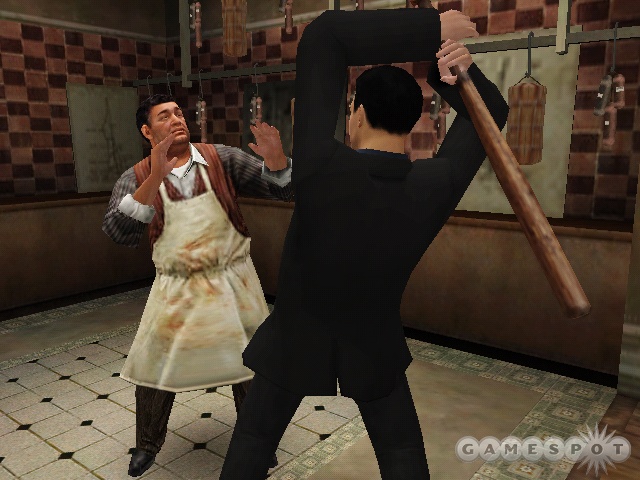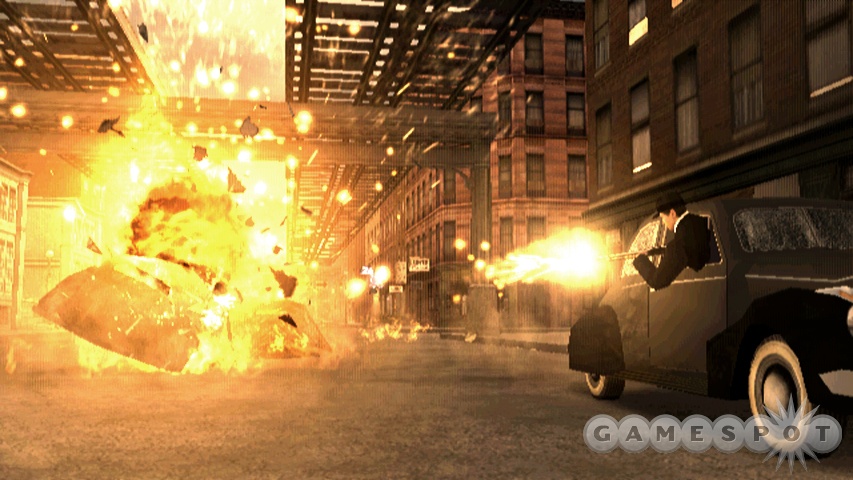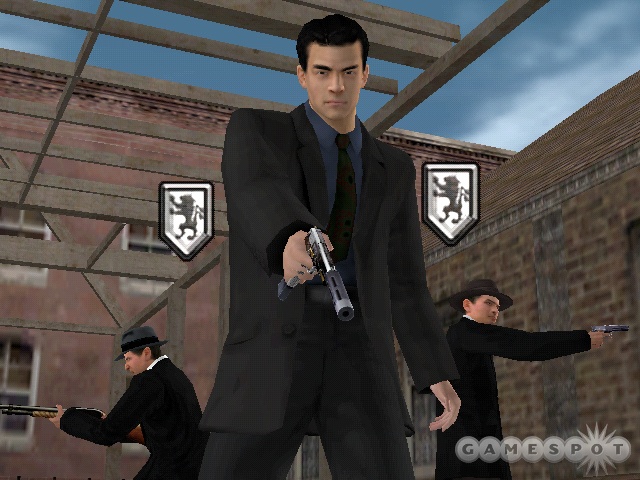The Godfather: Blackhand Edition Hands-On
We grab a Wii Remote and get our hands dirty on our way to becoming the Don of New York City in The Godfather: Blackhand Edition.
In The Godfather: Blackhand Edition, you take to the streets as a Corleone soldier and perform a wide array of gestures to virtually choke, punch, slap, and shoot scores of no-good thugs on the streets of New York City. Although the basic story in Blackhand Edition is identical to the previous home console versions of The Godfather, the game plays quite differently thanks to its unique control scheme. And beyond the controls, there's quite a bit of new content to be found in this version of the game, as well as some significant tweaks to existing gameplay mechanics. We got our hands on a Wii Remote and Nunchuk and took to the streets to see just how differently The Godfather plays on the Wii.

Up front, The Godfather: Blackhand Edition is the same game that has already been released for the PlayStation 2, PC, Xbox, and Xbox 360. Blackhand Edition includes all of the updates and added content found in the Xbox 360 version, as well as some further additions and refinements exclusive to the Wii and PlayStation 3 versions of the game. The most significant change made in adapting the game to the Wii is, of course, the controls.
The Blackhand control scheme is a new way for you to control your in-game character using the Wii Remote and the Nunchuk. The combat and shooting aspects of the game have been completely reworked to take advantage of the motion-sensing capabilities of the Wii. When you're on foot you move around with the analog stick on the Nunchuk and lock on to targets using the Z button. Once locked on, you can pull out a gun and start shooting. The targeting reticle will stay on your target, but you can use the Wii Remote to point at different pressure points, such as knees and arms, so that you can immobilize or disarm your enemy. There is also a free-aim mode where you can run around with the analog stick while aiming with the Wii Remote. We found the targeting system to be easier and more effective than the free-aim mode.
The Blackhand controls have the most influence on the hand-to-hand combat in the game. You can grab an enemy by holding the Z button on the Nunchuk and the B button on the Wii Remote. At this point, you use the two controllers as you would your hands, throwing punches by punching at the screen with the Wii Remote in your hand, slamming enemies against walls by shoving both the Wii Remote and the Nunchuk toward the television screen, and even head-butting enemies by quickly bringing the remote and Nunchuk up toward your head. In our experience the controls worked well, and the gestures felt natural and translated well to the action onscreen. However, using gestures isn't always as responsive as simply pressing a button, and as fun as the Blackhand controls are, it seems that they could become tiresome after you've strangled, shoved, and slapped several hundred enemies.
The Wii Remote is used in more ways than shooting and smacking enemies, though. There are 50 executions in the game, which are special finishing moves that you can perform after you've weakened an enemy enough. Using one of a dozen different execution gestures, you can perform these brutal moves. You can snap necks, shoot enemies in the head execution style, and so on using these special gestures that are illustrated with a pop-up diagram in the bottom right corner of the screen. In addition to the executions, you can do things like flick the Wii Remote to open doors, and perform special gestures with the Nunchuk to reload your weapons. To reload a shotgun, you move the Nunchuk up and down to mimic the pump action of the weapon, and to reload a revolver, you flick the Nunchuk as if you're emptying the cylinder. Ancillary actions like opening doors and reloading weapons seem trivial, but along with the rest of the Blackhand controls, they make the game feel and play completely differently from previous versions.

In addition to the full story from the original versions of The Godfather, this game includes all of the upgrades and additions from the Xbox 360 version. On top of that there are also five new hit missions, six new venues, two new vehicles, a fuel truck that can be rigged with a car bomb to produce massive explosions, a new "weapon wheel" to make it easier to choose your weapon on the fly, a completely reworked character development system, a brand-new family to contend with, and the ability to call in a "hit squad" to back you up in a fight.
One of the most interesting changes that we saw is the reworked skill system. In previous versions of The Godfather, as you earned respect you would get points that you could allocate to basic attributes like fighting, shooting, and speed. The result is that earning respect and leveling up didn't matter much, and you didn't have much flexibility in terms of how your character developed as you progressed through the game. In Blackhand Edition, the entire system has been changed. Now there are multiple paths you can take when leveling your character. There's the enforcer path, which is a blunt and violent path focused on strength, violence, and intimidation. The enforcer path is for players who want to be like Sonny Corleone.

However, if you want to be more levelheaded and diplomatic, like Tom Hagen, you can choose the operator path. As an operator your character is less focused on shooting and fighting and more focused on negotiating with other families, staying in the police force's favor, and letting others do the dirty work. As you level up along these paths you'll receive special bonuses called "perks." For instance, as an enforcer you might receive a perk that gives you infinite ammunition, or as an operator a perk might be that you can call in your hit squad twice as often. The new skill system seems to be an interesting addition to the game and should not only affect the way you play the game, but also enhance the replay value of the game by allowing you to play through it multiple different ways.
The hit squad is another addition that could potentially change your entire approach to some of the more difficult missions. In previous versions of the game you were essentially a one-man army storming into heavily fortified compounds and warehouses to take down dozens of mobsters all by yourself. You can still do that if you choose, but to make the game a bit more interesting you can now call in a hit squad of four heavily armed allies who will lend their shotguns, pistols, and tommy guns to your cause. You can call in your hit squad only when your family shield is glowing in the top left corner of the screen. The gauge fills up over time, and once it's activated, your character will whistle and a group of thugs will show up. These thugs don't work for free, but based on what we saw of the combat, the hit squad is worth the price. Since you can also bribe police offers to fight for you, you can effectively have a squad of about 10 guys backing you up in a fight, leaving you to stay safely out of harm's way. In fact, according to the developers, you can play through the entire game as a true diplomat and never pull a weapon.
The Godfather: Blackhand Edition looks comparable to the PlayStation 2 version of the game. There's a good amount of detail in the environment, and some of the new venues we saw were particularly impressive, such as a large rooftop area and a huge multilevel ship interior. The explosions still look nice, and the character animations match the corresponding gestures very well. There is a bit of noticeable pop-up as buildings appear out of nowhere in the distance while you're driving, and the vehicles don't deform as much as in other versions of the game, but for a Wii game, The Godfather is looking good.
If you own a Wii and haven't yet played The Godfather on other platforms, you'll want to keep your eye on this one. With the Blackhand controls, additional content, and reworked gameplay mechanics, this could be the most refined, robust version of the game. Even if you've already played The Godfather, you might want to check this version out, because based on what we played, it looks like the new control scheme will make this game play very differently from its predecessors. Look for The Godfather: Blackhand Edition to be released in March of this year.
Got a news tip or want to contact us directly? Email news@gamespot.com
Join the conversation